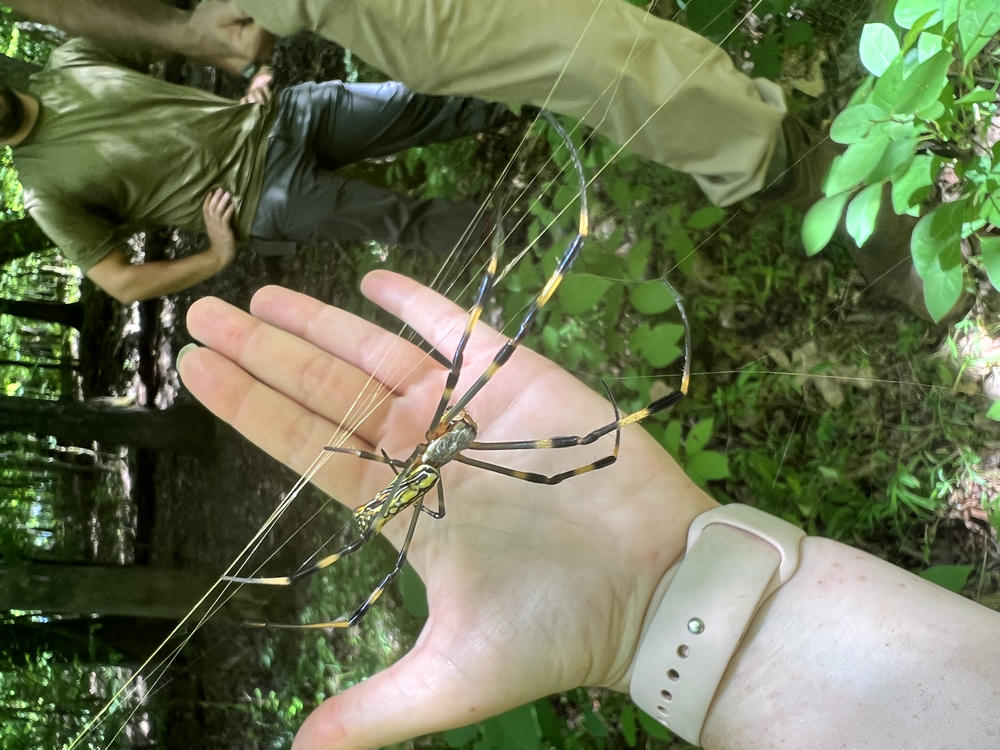
Caption
A person holds their hand alongside a female joro spider, Trichonephila clavata, an invasive golden orb weaver species of spider from Eastern Asia. They've spread wildly in northern Georgia since 2014.
Credit: Courtesy of Brittany Barnes

